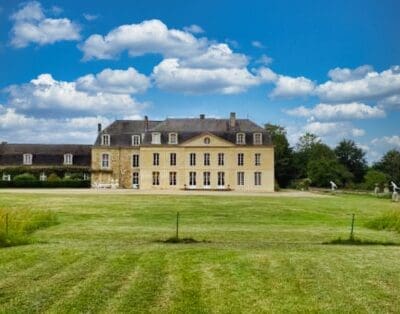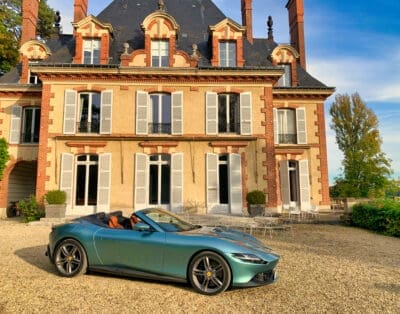Luxury In Lithuania: Top Hotels & Gastro Delights
With the Baltic country of Lithuania marking the 30th anniversary of the restoration of independence this March from the Soviet Union, I thought it appropriate and in order run through some top sights, leading hotels and gastronomic delights in and around Vilnius, the capital, which was first settled in the Stone Age. Over the years it has changed hands between Imperial and Soviet Russia, Germany, Poland, and Lithuania a multiple of times.
The date was 30 years ago, on 11 March 1990 that the restoration all this happened. This followed the Baltic Way, a political demonstration in the shape of a human chain spanning about 600 kilometres (c.370 miles) across the three Baltic capitals – Vilnius, Riga (Latvia) and Tallinn (Estonia). The peaceful demonstration showed the desire of the people of these three states to break away from the USSR (Soviet Union).
Bordered by Latvia to the north, Belarus to the east and south, Poland to the south, and Kaliningrad Oblast (a Russian exclave) to the southwest, Lithuania has a population estimated at around 2.8 million as of 2019.
On the economic front, the IT sector is growing in the country, having reached €1.9 billion (bn) in 2016. The following year, 35 fintech companies set up a presence in Lithuania – as a result of Lithuanian government and Bank of Lithuania simplifying procedures for obtaining licences for the activities of e-money and payment institutions. Furthermore, Europe’s first international Blockchain Centre launched in Vilnius in 2018 and that same year Google setup a payment company in the county.
Top Hotels: Vilnius
In Vilnius there are some notable examples of hotels that occupy historic Old Town buildings and others that echo historical elements. But there is a fair choice at the upper 5-star end however one looks at it.
PACAI: A 5-star Design Hotel, occupies a Baroque palace in Vilnius Old Town and dates back to 1677. Rich historic elements are masterfully blended with present-day design to showcase the soft, deep tones and elegant materials that heighten the structure’s classical style and complement its relaxing spa. (See:
Artagonist: A luxurious Art hotel is set in an authentic 15th century building in the Old Town. Rooms are decorated with handmade artworks by Lithuanian artists.
Grand Hotel Kempinski: A 5-star hotel located in the very centre of the Old Town, right on the Cathedral Square. It provides easy accessible to all tourists attractions that are within walking distance. The property is situated around 700 meters away from the Lithuanian National Opera and Ballet Theatre. And, if you are a spa goer this hotel also has a fully appointed spa and wellness centre.
Stikliai: Another 5-star hotel with apartments located in the heart of Vilnius, which calls itself a place where history meets luxury. On show there is unique French-style interior, which is designed by famous Anne Toulouse. Stikliai includes swimming-pool, sauna, spa, fitness room and a pool room.
Hotels with great room views over the city can be found at Grand Hotel Kempinski Vilnius, Vilnius Grand Resort and the Narutis Hotel.
Top Restaurants: Celebrating Lithuanian Independence
As part of the 30th anniversary celebration “independence-themed” dishes were being introduced this early March for the occasion. And, for four months, diners in Vilnius will be able to literally taste freedom and witness the progress Lithuanian cuisine made after its food traditions were neglected for fifty years. It’s a novel idea and there is some fine fayre to sample.
Joining the nation-wide commemoration effort, restaurants in the capital are adding unique, independence-inspired dishes to their menus. Guests and locals alike will be able to taste Lithuanian independence as imagined by the best chefs in the city until 6 July 2020.
Inga Romanovskienė, the Director of Go Vilnius, the official development agency of the city, commenting said: “The city was looking for a creative way of sharing this beautiful milestone with guests and locals alike.”
She added: “Knowing we have a city full of top-level chefs, and that gastronomical experiences are what a lot of travellers seek for when visiting, it only made sense to involve the restaurants. We were blown away by how co-operative and eager the chefs were to jump on board.”
Premise Behind The Idea
The original idea was to create dishes that signify freedom. The various chefs were expected to interpret freedom crafting a dish that would represent their personal idea of being free.
Perhaps not surprisingly, some of them related freedom with the independence of Lithuania and created dishes in yellow, green and red colours, which are the colours of the Lithuanian flag.
For example, Tomas Versockas from Meat chose to serve the 3-coloured Pavlova with mascarpone cream, raspberry and passion fruit puree and berries, in essence embodying the fragility of freedom that was regained by Lithuania.
Other chefs meanwhile chose local ingredients for their expressions of freedom as an inherently Lithuanian value. Tomas Rimydis from Ertlio namas combined traditional Lithuanian smoked meat skilandis with no less traditional beetroot, buckwheat and apples.
Then for others they select chose local ingredients for their expressions of freedom as inherently Lithuanian value. Take for this Tomas Rimydis from Ertlio namas, who combined traditional Lithuanian smoked meat skilandis with no less traditional beetroot, buckwheat and apples.
Lithuanian Snacks: Reflecting ‘National Drive’ For Freedom
Yet another interpretation of freedom is touted as being related it to the joy of being one’s true self. Visitors to restaurant Paupio 12, for example, will have a chance to taste simple home-made food that evolves and changes with each generation.
Boiled scones with pancetta and horseradish sauce are just that. And just like a “Lithuanian grandmother does it” according to the city’s marketing spiel. Through these and other starters, main dishes and desserts culinary artists interpreted freedom and independence in their own way, making the menus diverse and original in their looks, smell and taste.
“During the 30 years of independence, the level of our cuisine grew immensely,” explained Romanovskienė. “After enduring the bland Soviet gastronomy for 50 years, the country – and the city – have made leaps and bounds in establishing a one-of-a-kind, modern cuisine. Our chefs could finally go abroad and study from the global masters, come back home and innovate.”
She noted too that through “breaking out of uniform Soviet culinary standards we rediscovered our historical roots.”
A new generation of Lithuanian chefs have found inspiration in the noble cuisine of “Renaissance Lithuania” and in the multicultural gastronomy of Vilnius. As a result, the food lovers in Lithuania, are now enjoying world-class, yet authentic dishes.
A total of sixteen restaurants will take part in the celebration. The list includes the top-rated fine dining establishments like Amandus, Ertlio namas and Meat, tourist favourites like Mykolas 4 and Sugamour and even specialised eateries like the fish-restaurant Žuvinė.
The Riverside restaurant of the hotel Radisson Blu even created the special three-course menu for this occasion. Each of the independence-themed dishes will be specially marked in the menus of these restaurants.
It should be further pointed out that it is not the first time Vilnius and a clutch of its restaurants have worked together to surprise global audiences.
Take last September (2019), when footballer Cristiano Ronaldo visited the city for a match, Vilnius offered to host Ronaldo’s dinner with his long-time rival, Lionel Messi. Tables in top restaurants were reserved for ‘Ronaldo & Messi,’ while a local food artist created a 3D-food art piece depicting the two footballers. (See: www.vilnius-tourism.lt/en/vilnius-cristiano-ronaldo-parenge-ispudinga-st…).
Full information about freedom-inspired dishes in Vilnius can be accessed via a dedicated webpage (See: www.vilnius-tourism.lt/en/what-to-see/latest-tips/a-taste-of-lithuanian-…. This contains the list of all restaurants and their special dishes.
About the author: Roger Aitken is a freelance writer who contributes to a number of titles and was a former FT staff writer. In 2014 he was awarded a press prize from Czech Tourism on the 25th anniversary of the Velvet Revolution. He is also the recipient of a State Street Institutional press award (UK) for covering regulatory issues.
Published: 11 March 2020 (Independence Day).







